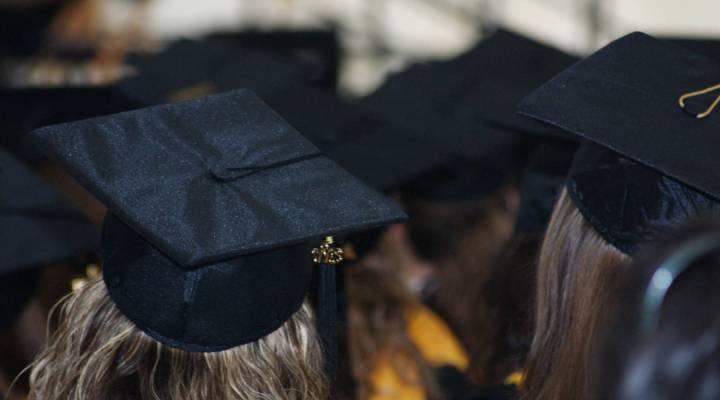
Default rates highlight growing student loan crisis

In 1988, Latarsha Cockey signed up for computer classes at PTC Career Institute in Baltimore, Md. She hadn’t finished high school, and was hoping some extra skills would help her find a decent-paying job to support her young child.
“I wanted to make sure my daughter had everything that she needed,” she said. “And some of the things she wanted.”
To pay for the classes, Cockey took out a $2,500 federal student loan. But she never finished.
“I think I was there less than a month, because I came down with an illness,” she said.
That didn’t stop the school from charging her, or the student loan bills from showing up. A seizure disorder has prevented her from working ever since, Cockey said. She made payments for a while, but eventually defaulted on the loan. Her sole income is a disability check, so even $20 a month is a strain.
“I just felt like, why should I pay back something that I didn’t benefit from?” she said.
Nearly 40 percent of student loan borrowers are either in default or more than 90 days past-due on their payments, according to a new report from the think tank Demos. And like Cockey, more than half of people struggling to pay owe less than $20,000. Students who borrowed less than $10,000 were about as likely to default as those owing more than $100,000.
“That was perhaps the most surprising part to me, that in essence there was no correlation between the amount borrowed and the default rate,” said the study’s author, Robert Hiltonsmith.
One likely reason: People who didn’t graduate, and didn’t get that boost in the labor market, were twice as likely to default as those with degrees.
“That’s really the hidden story of student loan default in this country,” said Justin Draeger, president of the National Association of Student Financial Aid Administrators. “It’s not the students who have racked up tens of thousands of dollars in loan debt. It’s the students who have relatively low amounts that have to, for whatever reason, drop out or stop out of school, and then find themselves in a world of hurt when they default.”
Latarsha Cockey eventually got legal help. Her pro bono lawyer, Catherine Gonzalez, has applied for Cockey’s loan to be discharged, based on alleged fraud at the now-defunct career school she attended.
“Even though the amount might seem relatively small, that’s a huge amount to pay if you have limited income,” Gonzalez said.
But default can have disastrous consequences for borrowers. Not only do they wind up paying more in fees and penalties, said Hiltonsmith, the ding to their credit makes it harder to get mortgages and credit cards, and even find jobs.
“Student loan default is really one of the worst things, financially, that can happen to you,” he said.
There’s a lot happening in the world. Through it all, Marketplace is here for you.
You rely on Marketplace to break down the world’s events and tell you how it affects you in a fact-based, approachable way. We rely on your financial support to keep making that possible.
Your donation today powers the independent journalism that you rely on. For just $5/month, you can help sustain Marketplace so we can keep reporting on the things that matter to you.


















